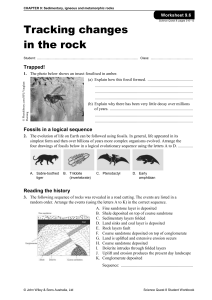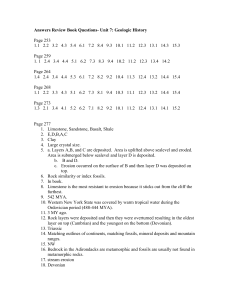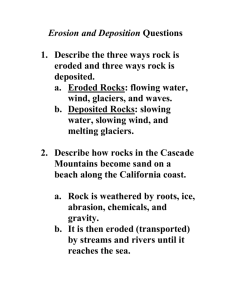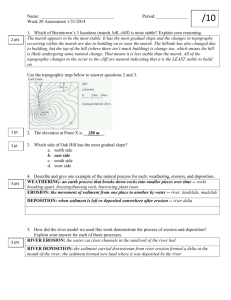1 - JustAnswer
advertisement
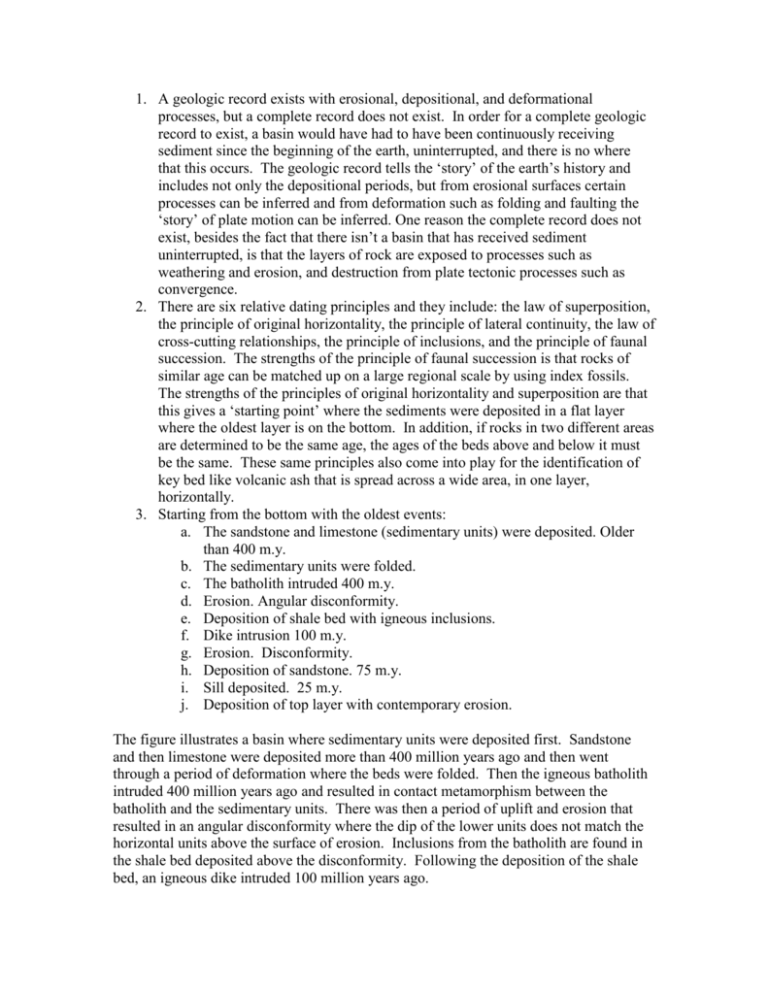
1. A geologic record exists with erosional, depositional, and deformational processes, but a complete record does not exist. In order for a complete geologic record to exist, a basin would have had to have been continuously receiving sediment since the beginning of the earth, uninterrupted, and there is no where that this occurs. The geologic record tells the ‘story’ of the earth’s history and includes not only the depositional periods, but from erosional surfaces certain processes can be inferred and from deformation such as folding and faulting the ‘story’ of plate motion can be inferred. One reason the complete record does not exist, besides the fact that there isn’t a basin that has received sediment uninterrupted, is that the layers of rock are exposed to processes such as weathering and erosion, and destruction from plate tectonic processes such as convergence. 2. There are six relative dating principles and they include: the law of superposition, the principle of original horizontality, the principle of lateral continuity, the law of cross-cutting relationships, the principle of inclusions, and the principle of faunal succession. The strengths of the principle of faunal succession is that rocks of similar age can be matched up on a large regional scale by using index fossils. The strengths of the principles of original horizontality and superposition are that this gives a ‘starting point’ where the sediments were deposited in a flat layer where the oldest layer is on the bottom. In addition, if rocks in two different areas are determined to be the same age, the ages of the beds above and below it must be the same. These same principles also come into play for the identification of key bed like volcanic ash that is spread across a wide area, in one layer, horizontally. 3. Starting from the bottom with the oldest events: a. The sandstone and limestone (sedimentary units) were deposited. Older than 400 m.y. b. The sedimentary units were folded. c. The batholith intruded 400 m.y. d. Erosion. Angular disconformity. e. Deposition of shale bed with igneous inclusions. f. Dike intrusion 100 m.y. g. Erosion. Disconformity. h. Deposition of sandstone. 75 m.y. i. Sill deposited. 25 m.y. j. Deposition of top layer with contemporary erosion. The figure illustrates a basin where sedimentary units were deposited first. Sandstone and then limestone were deposited more than 400 million years ago and then went through a period of deformation where the beds were folded. Then the igneous batholith intruded 400 million years ago and resulted in contact metamorphism between the batholith and the sedimentary units. There was then a period of uplift and erosion that resulted in an angular disconformity where the dip of the lower units does not match the horizontal units above the surface of erosion. Inclusions from the batholith are found in the shale bed deposited above the disconformity. Following the deposition of the shale bed, an igneous dike intruded 100 million years ago. Following the intrusion of the dike, there was another period of uplift and erosion. This is recognized by the abrupt termination of the dike. After the sandstone layer was deposited (100-25 million years ago), a sill intruded 25 million years ago. The uppermost unit is a sedimentary layer that has undergone uplift and is displaying contemporary erosion.


